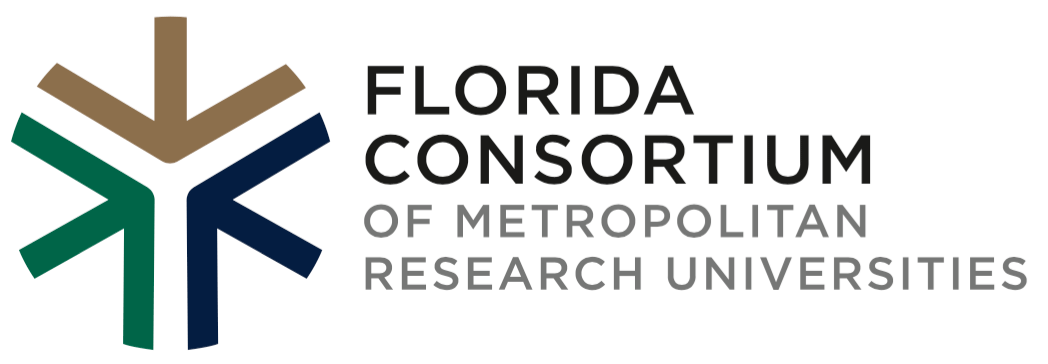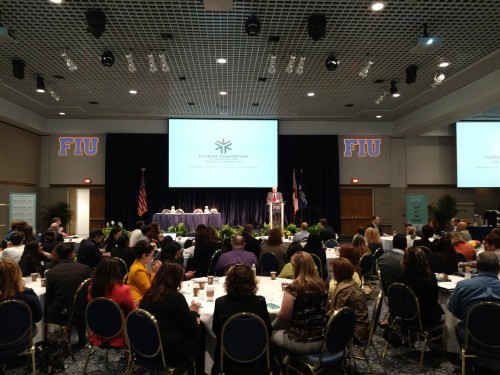Featured Post by: Ginny Botts, Ed. D
The Florida Consortium of Metropolitan Research Universities is committed to eliminating barriers in education. In 2016, we wondered what would happen if experts in science, technology, engineering, and math came together to discuss pressing issues in STEM education. With funding from the Helmsley Charitable Trust, we developed an experiment and gathered experts from respective fields. These Faculty Learning Communities, or FLCs, are teams made up of “cross-disciplinary faculty…who engage in active, collaborative, yearlong program with a curriculum about enhancing teaching and learning with frequent seminars and activities that provide learning, developing, the scholarship of teaching, and community building” (Cox, 2004, p. 8). We found that faculty greatly valued being given the opportunity, time, and space to collaborate with colleagues on their same campus as well as those on other campuses. They came to recognize that they were not alone in their experiences, but often had similar needs, goals, and problems. By engaging in inter-university and inter-disciplinary discussions, faculty were afforded a support network that then produced some exciting results. Thus the outcome of this experiment was multi-prong discussions and not just about nuances of the latest research in their discipline, but about their experiences within their disciplines, and their experiences with students and teaching.
When we asked about the benefits of participating with the project, faculty reported the following:
“The opportunity to talk to faculty in the same discipline about common problems and possible solutions.”
“Learning from colleagues.”
“Understanding problems and the solutions for a common good. Without Helmsley funds, such collaboration and understanding would not have been possible.”
“It gave me an opportunity to reflect and act on improving my calculus teaching.”
“It made me rethink. It inspired me. It brought back an emotional connection to what we teach.”
“The possibility to establish new collaboration and meet wonderful people with similar interest in education.”
At the heart of these experts are people who love to learn, grow, research, and make things better. Our model has allowed faculty to do that alongside others with those same qualities. Conversations at our meetings led to relationships, within and across disciplines, and changes in the classroom. These conversations led to more collaboration, more ideas, and more excitement. In some cases, it lead to faculty meeting with each other outside of project requirements.
The biggest success that we had was that once we started getting faculty together, they wanted more – more meetings, more projects, and more opportunities to engage with each other. We viewed our experiment as such a success that we are planning for round two to begin this spring.
Source: Cox, M.D. (2004). Introduction of faculty learning communities. New Directions for Teaching and Learning, 97, 5-23.
Related Content:

